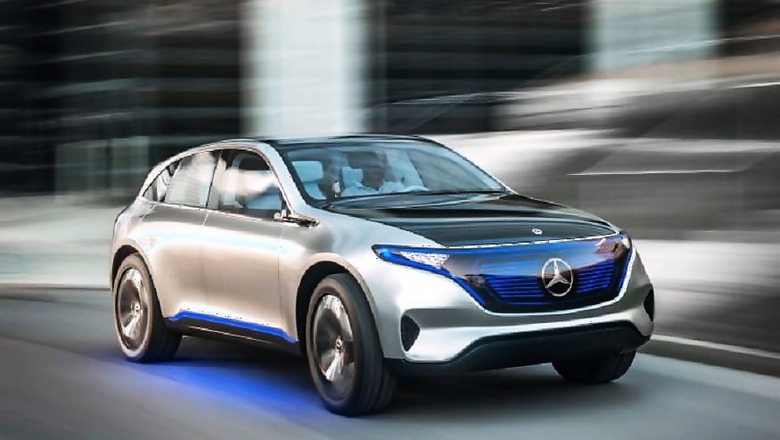
views
With every month that passes, a new record is being set in terms of electric car sales, but as more and more car companies finally put the full weight of their R&D departments behind plug-in electric and hybrid cars, potential supply chain issues surrounding lithium production could put the brakes on their ambitious plans.
In the past week, BMW reported that over the first three quarters of the year it has sold more electrified cars -- the term it uses to describe pure battery-electric cars and plug-in hybrid vehicles -- than it had achieved over the entirety of 2016. In September alone it sold 10,000 such vehicles, a feat never before achieved in a calendar month, bringing total 2017 sales up to the 68,687 mark -- a 64.2% increase compared with the same period in 2016.
"This year, we've already sold more electrified vehicles than in the whole of last year and we are well on track to deliver our target of 100,000 by year-end," said Dr Ian Robertson, BMW AG Management Board Member for Sales and Brand BMW.
And as impressive as those figures sound, the biggest piece of electrified automobile news to arrive this week is from China, the country that has taken an early lead in electric car uptake.
According to The China Association of Automobile Manufacturers (CAAM), consumers snapped up 77,000 plug-in electric vehicles in September, meaning that at the current rate of uptake, a phenomenal 700,000 new EVs could be on the country's roads before the end of the year, a significant increase on the 500,000 sold in 2016.
China is already the world's largest single traditional car market and is fast becoming the most important region for EV and alternative fuel car sales too. This exponential growth is why in recent months a host of established car companies including Ford have announced joint ventures in the country with the aim of co-developing electric cars and breaking into the market.
However, it's also why electric cars are well and truly back on the automotive agenda. After this year's Geneva Motor Show, there was a collective feeling that major automakers were shelving their ambitious EV plans, but as the calendar year draws to a close there appears to have been a massive U-turn.
Audi has confirmed its first all-electric family car will now debut in 2019; Honda, who until now was banking on hydrogen to replace gasoline, has confirmed it's about to launch an EV called the Clarity; and VW has revealed an ambitious target of one-in-four futures sale being of the electric variety by 2025.
As for Mercedes, the world's oldest car company, it is investing €10 billion to create a new EQ range of plug-in electric cars. "By 2022 we will be bringing more than ten different all-electric vehicles to market," said Ola Källenius, Daimler's head of Research and Development. "We will also be electrifying the entire Mercedes Benz portfolio and our customers will thus have the choice of at least one electric alternative in every Mercedes Benz model series, taking the total to 50 overall."
However, Daimler believes that even 10 years into the future, the EV won't be sufficiently robust to meet all mobility needs. "The combustion engines will still be around for a long time to come. In the year 2025 we are looking at a sales share of up to 25% for the purely battery-electric cars. This automatically means that at least 75% will still have a combustion engine on board -- also combined with electric, naturally," he said.
Of course, there is also the issue of lithium. Though an abundant element and one that's comparatively easy to mine or harvest from evaporating brine, there isn't enough lithium being produced to meet current demand.
This supply and demand issue will also mean that other older forms of mobility are still going to be crucial to fill the void while supply chains and methods of lithium collection hit maturity.
According to US News Corp which tracks commodities, by 2020 there could be a serious lithium shortfall and, even at current usage rates, to meet existing demands -- i.e., not factoring in new electric car plans and announcements made over the past 12 months -- a new mine or facility will have to come online every year between now and 2025.
All of which means that as well as gasoline, the diesel engine could still prove a crucial stop gap in meeting tougher emissions and stringent fuel economy regulations in the short to medium term.
"We still need the diesel," said Källenius. "It has an advantage regarding CO2 emissions and this source of power is still relevant in goods transport, as well as in numerous markets, above all in Europe."
Also Watch: Maruti Suzuki Dzire vs Tata Tigor Comparison Review | Cars18




















Comments
0 comment